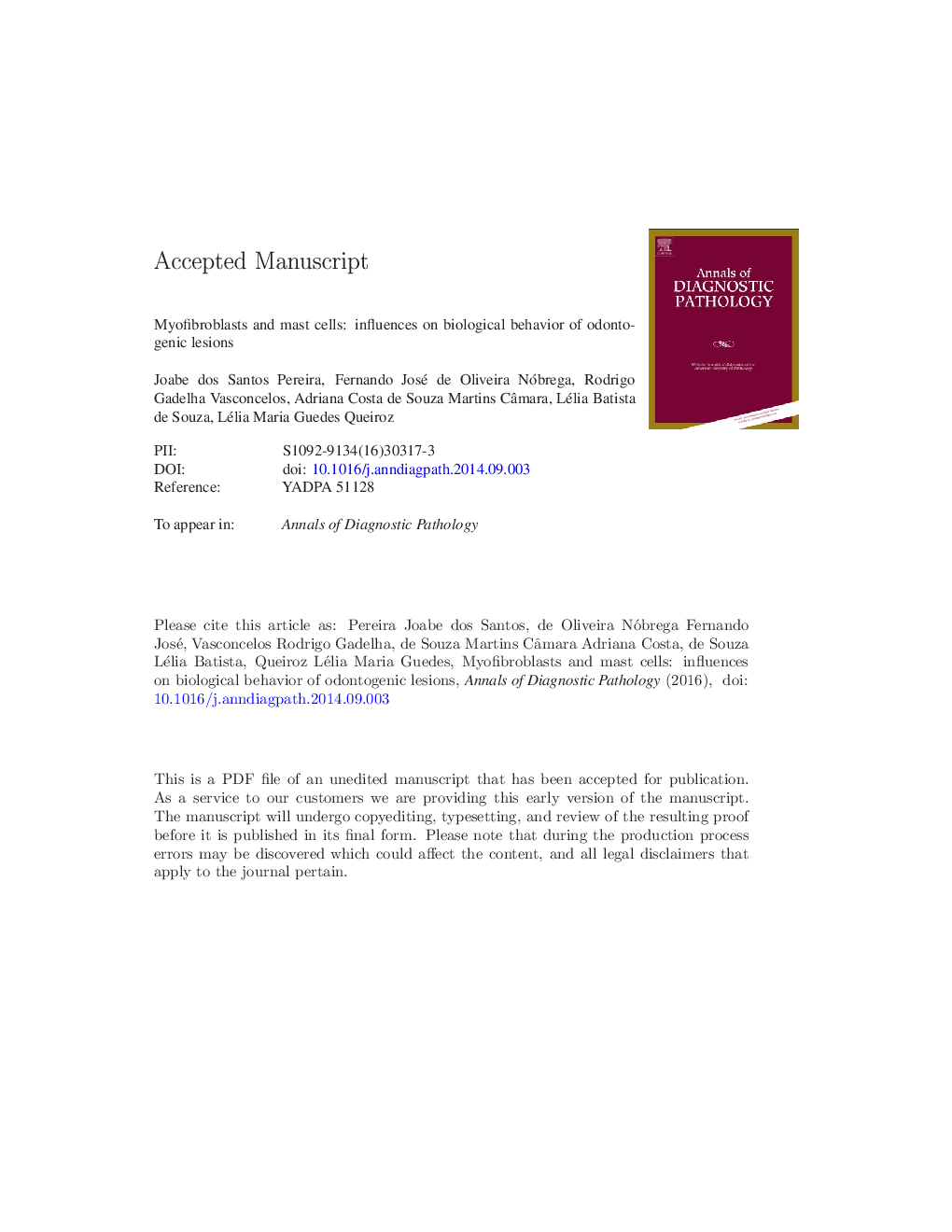| Article ID | Journal | Published Year | Pages | File Type |
|---|---|---|---|---|
| 8807191 | Annals of Diagnostic Pathology | 2018 | 29 Pages |
Abstract
Odontogenic lesions differ in their rate of recurrence and aggressiveness. This study aimed to evaluate the presence of myofibroblasts and mast cells in odontogenic lesions. Sample consisted of 20 cases each of dentigerous cysts, odontogenic keratocysts, and solid ameloblastomas. Histologic sections were submitted to immunohistochemistry using anti-α-smooth muscle actin and anti-tryptase antibodies. Myofibroblasts and mast cells were counted at Ã400 magnification in 5 and 10 fields, respectively. Myofibroblasts were more frequent in ameloblastomas (24.41), followed by odontogenic keratocysts (16.21) and dentigerous cysts (11.85; P = .002). Granulated and degranulated mast cells were more frequent in dentigerous cysts (7.88 and 8.96, respectively), followed by odontogenic keratocysts (6.53 and 7.08) and ameloblastomas (5.21 and 1.88). The difference was only significant for degranulated mast cells (P < .05). Analysis of the correlation between myofibroblasts and mast cells (granulated and degranulated) revealed a moderate positive correlation only in ameloblastomas (R = 0.621, P = .003). Probably, myofibroblasts are related to the biological behavior of the odontogenic lesions studied, particularly their aggressiveness. On the other hand, mast cells seem to be associated with inflammatory processes, which are more frequent in cystic lesions than in benign neoplasms. In addition, mast cells may induce the differentiation of fibroblasts into myofibroblasts, thus increasing the number of the latter.
Related Topics
Health Sciences
Medicine and Dentistry
Pathology and Medical Technology
Authors
Joabe dos Santos Pereira, Fernando José de Oliveira Nóbrega, Rodrigo Gadelha Vasconcelos, Adriana Costa de Souza Martins Câmara, Lélia Batista de Souza, Lélia Maria Guedes Queiroz,
